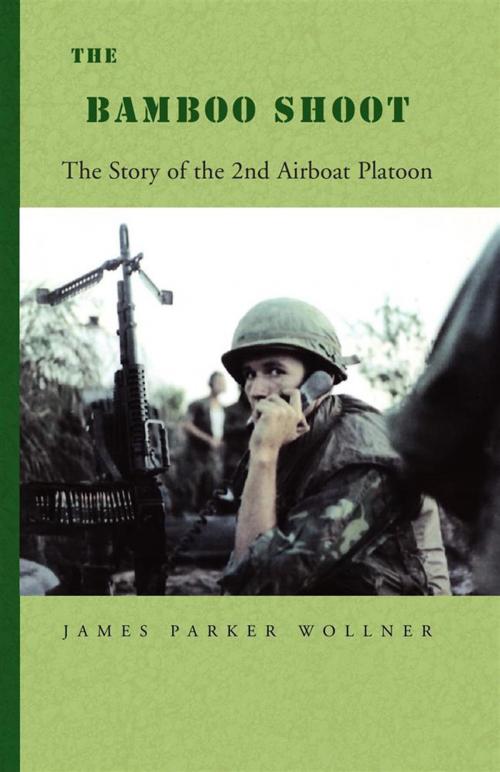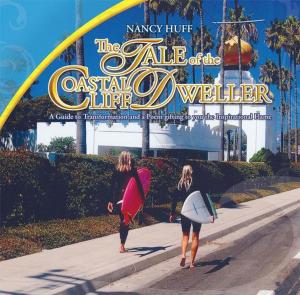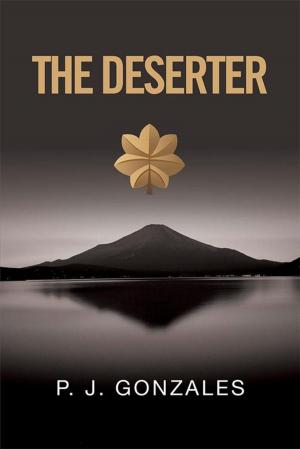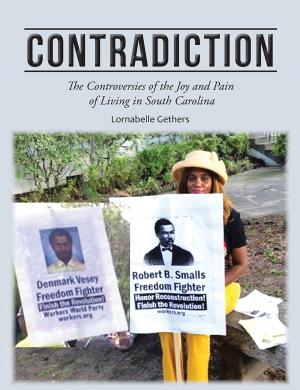| Author: | James Parker Wollner | ISBN: | 9781469113296 |
| Publisher: | Xlibris US | Publication: | September 13, 2004 |
| Imprint: | Xlibris US | Language: | English |
| Author: | James Parker Wollner |
| ISBN: | 9781469113296 |
| Publisher: | Xlibris US |
| Publication: | September 13, 2004 |
| Imprint: | Xlibris US |
| Language: | English |
The Bamboo Shoot is the memoir of James Parker Wollner detailing his experiences and those of his platoon members of day to day life during the Vietnam War. It is also a story of his surroundings as well as the various ethnic groups that the unique unit worked with, from the Nungs to the Thais. It is a story of emotions, the good and bad, days of monotony followed by days that seemed to fly by. It is the story of the feelings of terror and grief at the loss of friends, and the uplifting spirit of camaraderie between brothers, and of helping those who could not help themselves.
The story starts with Jims arrival in Vietnam and subsequent posting to the 9th Infantry Division. Realizing that the area of operations of the 9th is the Mekong Delta, Jim realizes he is in trouble! He can see himself humping an 82 mm mortar through the muck and mire of this unforgiving swamp. How in Gods name can he get out of this one? Either by prayers, or providence or just dumb luck, a lifeline is thrown out. A new unit was being formed involving the use of airboats, and volunteers were needed. Jim figured that it was better to be riding than walking, so his hand went up!
Jim wasnt exactly sure what an airboat was but neither did the other seventeen volunteers. So Jim and company were all in the "same boat". Almost every member of the group was from a different part of the country. Maine, New Jersey, New York, Pennsylvania, Georgia, Indiana, Wisconsin, Michigan, Alabama, Louisiana, Tennessee, Texas, California, Washington, and even Alaska were represented by at least one of the group. Within two days this group of volunteers was off to the Special Forces for training.
None of the group had ever been in combat before, even the buck sergeant in charge. The group quickly learned that the Special Forces were hardened warriors and were glad to be trained by them. They were the consummate professionals when it came to fighting a war. The unit became sponges, soaking up as much knowledge as possible for all wanted to survive this war as intact as possible. They learned about weapons they had only seen in pictures. World War II .30 cal machine guns were used on the boats, not the M-60 machine guns they knew, so they learned all over again. They learned the operation of Thompson sub machine guns, grease guns, .30 carbines, Chinese AK-47s and RPGs.
Three weeks later they had mastered the airboats and some of the war-time tactics. The group would go on a combat mission, to a mike-force base in the Plain of Reeds. This base was very close to the Cambodian border. The unit would travel up the Mekong river whose expanse was both frightening and breathtaking. The trip would take approximately 5 hrs to travel fifty kilometers, as you could go no more than 20 mph. This base was called Don Phouc and was situated in the Plain of Reeds ,near the Cambodian border. They learned more tactics, only this time it was for real. The time here is told through vignettes. A week later they were back at Cao Lanh, only to stay until the next morning. They would then fly to Camp Bearcat and get their own brand new airboats.
Once back at Bearcat the unit was expecting to get their boats but they hadnt arrived from the States. Because of this delay the group was sent to a line outfit, the 2/60th, that operated out of a place called Tan Tru. This unit used boats with outboard motors due to the necessity of ferrying troops ans carrying supplies across small rivers and canals. The Army wanted to keep the unit on the water so as not to lose what had been learned, hence the posting to this unit. The time spent here would yield many experiences that would make an indelible impression on all, Jim in particular. Jim was the first member of the unit to receive a Purple Heart. Those who had an infantry MOS received CIBs, combat infantry badges, for action against the enemy. This time also cemented rel
The Bamboo Shoot is the memoir of James Parker Wollner detailing his experiences and those of his platoon members of day to day life during the Vietnam War. It is also a story of his surroundings as well as the various ethnic groups that the unique unit worked with, from the Nungs to the Thais. It is a story of emotions, the good and bad, days of monotony followed by days that seemed to fly by. It is the story of the feelings of terror and grief at the loss of friends, and the uplifting spirit of camaraderie between brothers, and of helping those who could not help themselves.
The story starts with Jims arrival in Vietnam and subsequent posting to the 9th Infantry Division. Realizing that the area of operations of the 9th is the Mekong Delta, Jim realizes he is in trouble! He can see himself humping an 82 mm mortar through the muck and mire of this unforgiving swamp. How in Gods name can he get out of this one? Either by prayers, or providence or just dumb luck, a lifeline is thrown out. A new unit was being formed involving the use of airboats, and volunteers were needed. Jim figured that it was better to be riding than walking, so his hand went up!
Jim wasnt exactly sure what an airboat was but neither did the other seventeen volunteers. So Jim and company were all in the "same boat". Almost every member of the group was from a different part of the country. Maine, New Jersey, New York, Pennsylvania, Georgia, Indiana, Wisconsin, Michigan, Alabama, Louisiana, Tennessee, Texas, California, Washington, and even Alaska were represented by at least one of the group. Within two days this group of volunteers was off to the Special Forces for training.
None of the group had ever been in combat before, even the buck sergeant in charge. The group quickly learned that the Special Forces were hardened warriors and were glad to be trained by them. They were the consummate professionals when it came to fighting a war. The unit became sponges, soaking up as much knowledge as possible for all wanted to survive this war as intact as possible. They learned about weapons they had only seen in pictures. World War II .30 cal machine guns were used on the boats, not the M-60 machine guns they knew, so they learned all over again. They learned the operation of Thompson sub machine guns, grease guns, .30 carbines, Chinese AK-47s and RPGs.
Three weeks later they had mastered the airboats and some of the war-time tactics. The group would go on a combat mission, to a mike-force base in the Plain of Reeds. This base was very close to the Cambodian border. The unit would travel up the Mekong river whose expanse was both frightening and breathtaking. The trip would take approximately 5 hrs to travel fifty kilometers, as you could go no more than 20 mph. This base was called Don Phouc and was situated in the Plain of Reeds ,near the Cambodian border. They learned more tactics, only this time it was for real. The time here is told through vignettes. A week later they were back at Cao Lanh, only to stay until the next morning. They would then fly to Camp Bearcat and get their own brand new airboats.
Once back at Bearcat the unit was expecting to get their boats but they hadnt arrived from the States. Because of this delay the group was sent to a line outfit, the 2/60th, that operated out of a place called Tan Tru. This unit used boats with outboard motors due to the necessity of ferrying troops ans carrying supplies across small rivers and canals. The Army wanted to keep the unit on the water so as not to lose what had been learned, hence the posting to this unit. The time spent here would yield many experiences that would make an indelible impression on all, Jim in particular. Jim was the first member of the unit to receive a Purple Heart. Those who had an infantry MOS received CIBs, combat infantry badges, for action against the enemy. This time also cemented rel















